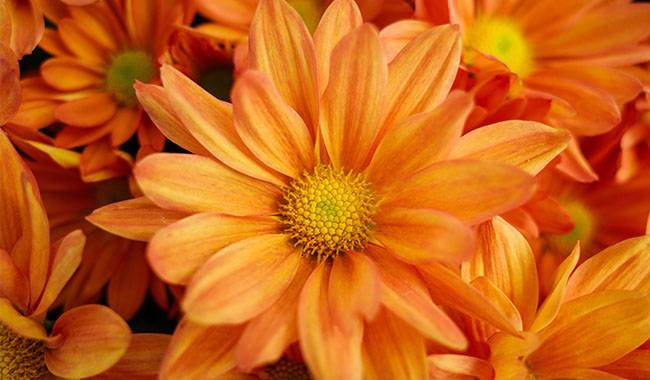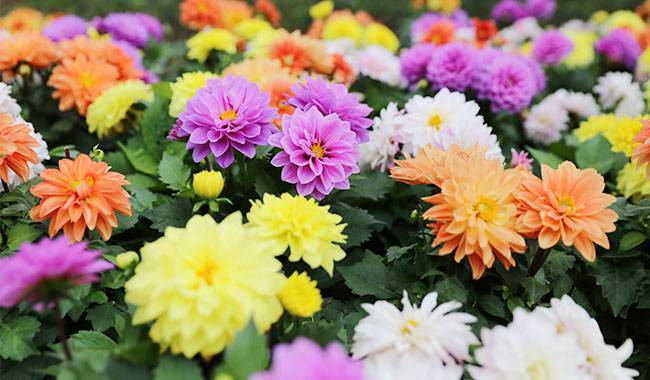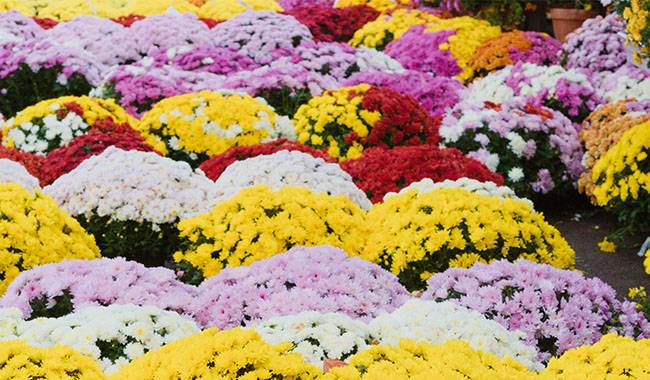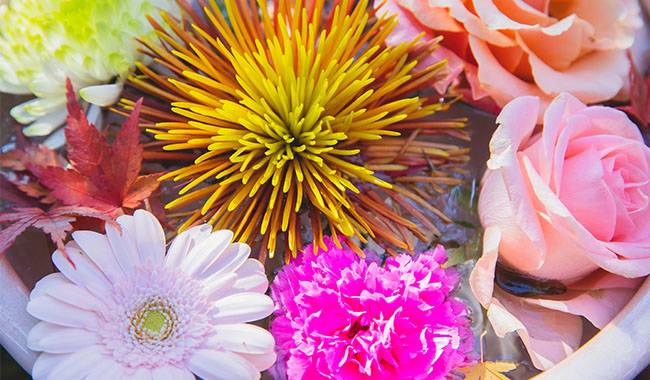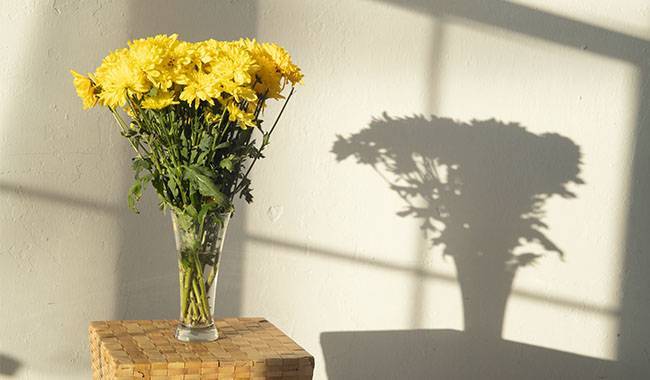
The garden library is full of perennials, tubers, and bulbs that can be the stars of the fall garden. But even today, the graceful chrysanthemum remains a fall favorite.
Whether capricious or more modest and hardy, chrysanthemums are an important part of the great fall show with their unique palette, gorgeous blooms, and unmatched seasonality. So how to take care of chrysanthemum properly? They’re not easy to grow, and timely care is the key to success. But these plants deserve attention.
Chrysanthemum is one of the largest genera of perennial herbs and semi-shrubs. There used to be more than two hundred species of chrysanthemums, but today many of them have been grouped into the Nivaceae, Weedaceae, Prickly Pear, and even Bambusa genera.
There are so many confusing classifications that even experienced florists have trouble sorting them out. However, chrysanthemums are always easy to identify from the outside.
Regardless of the species, or even whether it is an annual or perennial, potted, or in soil, chrysanthemums remain a very special star.
Legend has it that chrysanthemums gained universal popularity thousands of years ago. Although they have transformed considerably since the days of the emperors, offering their extraordinary variety today, their popularity has never wavered.
Herbs and semi-shrubs, perennials and annuals, chrysanthemums always have stiff, straight shoots with alternate leaves. Whether their leaves are large or small, forked or simple, serrated, solid or serrated, their green foliage varies.
But the deep, dark green color, which looks light to highlight the vividness of the lush inflorescence, is a consistent feature of chrysanthemums.
Their flowers are small, ligulate, and tubular, forming a standard bosom-like inflorescence, differing only in size, the shape of the ligulate flowers, and the arrangement of single or multiple rows. However, both plain chrysanthemums and those with varying degrees of freckling are easily recognizable and always appear unmistakable.
Indian chrysanthemums, mostly grown as container beauties, cushion-flowering Korean chrysanthemums, the rarer and less hardy varieties have rather strict soil requirements and different preferences, and while not necessarily too difficult, they must be cared for regularly. These plants can only produce spectacular flowers if they are well cared for.
MOISTNESS AND WATERING REQUIREMENTS FOR CHRYSANTHEMUMS
Chrysanthemums grown in the open are very afraid of being soaked and over-watered, so it is better not to water them at all than to over-water them: even in periods of prolonged drought, this magnificent plant can be left unwatered.
However, you will not achieve spectacular and lush flowering in this way. Therefore, chrysanthemums should be watered regularly, but very gently, checking the condition of the soil and the plant itself frequently.
As a rule, plants do not need systematic watering during flowering, but during the active growth phase and in preparation for the main show. Once flowering starts, you can stop watering as the risks will far outweigh the positive effects.
For chrysanthemums, complimentary water treatments should be done frequently, but not too much. Chrysanthemums should be watered with warm water, carefully, without soaking the leaves or pouring water into the base of the bush. Note also the characteristics of the water: soft water rather than hard water is more suitable for chrysanthemums.
Of course, all chrysanthemums grown in containers, pots, and planters need to be watered equally carefully and systematically. The soil should be lightly moistened for this type of plant, allowing the substrate to dry out in the upper or even part of the middle layer between these procedures.
PRUNING AND SHAPING OF CHRYSANTHEMUMS
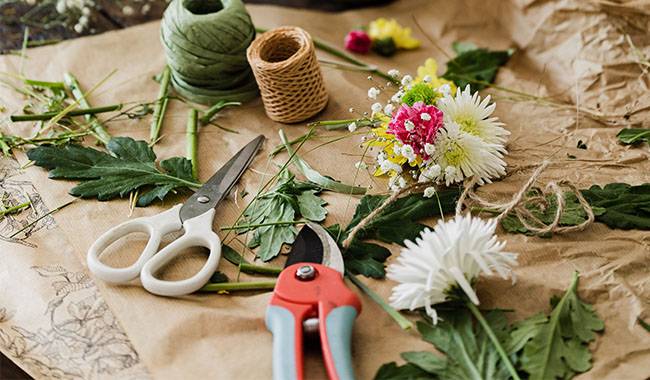
To make chrysanthemums form thick and compact bushes, prune the shoots or shorten the tips slightly as needed to shape the plant.
For small-flowered chrysanthemums, picking is usually done in early June. Generally, two pruning operations are appropriate for all chrysanthemums, i.e. pruning the main shoot first and then the side shoots that form after it. Regardless of the type of chrysanthemum, there is no need to palm this plant.
Regular removal of faded flowers will prolong the flowering period and keep the shrub neat and beautiful. Leaves on chrysanthemums that are damaged, dry, or too dirty should also be removed promptly. Some growers even recommend removing the oldest leaves to reduce the chance of pests and diseases and the resulting problems.
If the chrysanthemums are taller, it is best to install supports in time to avoid breaking rather fragile shoots and to start tying the shrubs as they grow.
Before mulching, cut back perennial chrysanthemums for the winter. The plant does not need to be cut to soil level – the bush is usually shortened to a stump height of about 10cm (3.9inch).
LOOSEN THE SOIL
Chrysanthemums can be mulched, which stabilizes the soil and reduces the loosening procedure. However, more often than not, it is standard practice for chrysanthemums to loosen the soil while removing weeds, rather than creating a layer of mulch. For chrysanthemums, aeration should be shallow to avoid the risk of contact with the roots.
The best approach is a combination of loosening during the peak growth period and mulching during the blooming period. Loosening is done in spring and early summer, and then instead of loosening, a 6-8cm (2.3-3.1inch) high layer of mulch is established and maintained until the following spring. You can mulch chrysanthemums with materials such as humus and peat.
Loosen the soil for potted chrysanthemums 2-3 times in summer.
NUTRIENT CONTENT OF CHRYSANTHEMUM
Chrysanthemums need to be fertilized regularly. Grown in pots or containers, annual chrysanthemums can either be fed as frequently as every 2-3 weeks like traditional summer plants, or fertilized like perennial varieties.
The traditional fertilization strategy consists of three treatments.
- The first feeding is done in the spring or at peak growth, but always before the start of budding. Full mineral fertilizer with double the nitrogen content or use a batch each of nitrogen and a compound mixture.
- A second fertilizer application is made at the budding stage. Potassium phosphate and all-mineral fertilizers or special preparations for flowering plants can be used for it.
- The third application of fertilizer should be made after flowering, about midway through this stage, or 2-3 weeks after the first flower sprouts. For this purpose, you can use a special flowering plant fertilizer or a potassium phosphate mix.
In addition to basal fertilizers, chrysanthemums respond well to growth stimulant treatments. Before the buds begin to swell, spray a solution of the stimulant or, at the budding stage, add the preparation to the irrigation water at the rate specified by the manufacturer.
For chrysanthemums, an organic fertilizer solution can be used in place of some of the fertilizers.
When applying fertilizer, avoid soaking even the lower leaves and getting water droplets.
CHRYSANTHEMUM REJUVENATION
Garden chrysanthemums believe that they should be replanted every 3-4 years to prevent shallow flowering and prevent health problems in the bush. Transplanting is done in the spring, in conjunction with dividing the plants, being careful to minimize root injury.
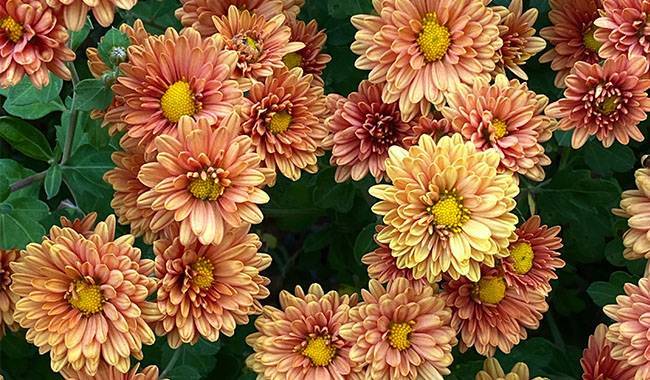
OVERWINTERING CHRYSANTHEMUMS
Chrysanthemum perennials need protection through the winter. For chrysanthemums, the most common methods are mulching and buttressing with dried leaves or sawdust. prune chrysanthemum bushes in early November, when nighttime temperatures are stable.
If you do not make a mulch in summer, cover the soil with a traditional layer of mulch and put a 20-30cm (7.8-11.8inch) high layer of leaves or other dry material on top of the mulch.
If you grow varieties with low frost resistance, plant chrysanthemums with unknown characteristics in the ground and transfer the plants to pots for the winter. Remove the leaves from them and transfer them, along with the soil, to containers and crates.
Store chrysanthemums at a temperature of about 41°F (5°C) over the winter. When the plants begin to sprout, raise the temperature and move the plants to light, while watering them gently. As soon as the weather permits, put the chrysanthemums back in the soil.
If plants continue to bloom during the first frosts of fall, protect the shrubs in advance with fleece or film to protect the inflorescences and shoots from damage and maintain decorative qualities.
PEST AND DISEASE CONTROL
Chrysanthemums are hardly a hardy crop. Even under seemingly optimal conditions, pests and diseases often appear on them. It all depends very much on luck and weather.
Gray rot, downy mildew, and powdery mildew are most common on perennial chrysanthemums. Diseases must be controlled with fungicides that have a systemic effect.
Nematodes also cause problems in many potted or cultivated chrysanthemums and can only be replanted by dividing or destroying the plants in the garden – followed by a refusal to plant chrysanthemums in the affected area for 2 to 3 years.
Snails, slugs, mites, aphids, and even earwigs love chrysanthemum greenery. To prevent slugs, it is best to take timely preventive measures. But on the other hand, insects should be treated with insecticides immediately.




